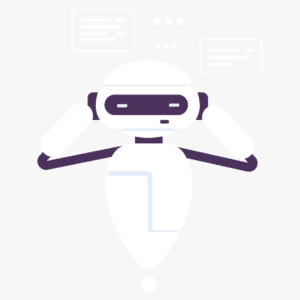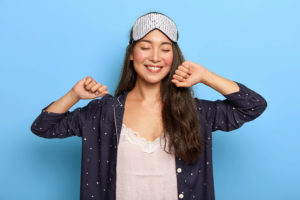
THE BOTTOM LINE
- There are excellent devices available that give useful information about sleep patterns.
- Select one that’s comfortable to use and gives essential sleep information
- Monitoring your sleep is an important aspect of improving your life.
Every night we doze off into a coma-like state where we intermittently have movie-like hallucinations while our brains and bodies engage in essential maintenance activities. Unsurprisingly, we’re not the most accurate assessors of our own sleep.
Monitoring your sleep is important when you are trying to improve your life. The quality and quantity of sleep you get are key markers in defining which changes are benefiting your sleep schedule. Some trackers may even help you determine if you have a sleep disorder. Unless you’ve installed a sleep lab in your home or hired a sleep doctor to monitor you every night, a wearable sleep tracking device is the next best option.
Are wearable sleep tracking devices accurate?
Nothing beats an in-depth sleep study conducted by specialists, but wearable devices offer a lot of useful information about your sleep patterns that can help you monitor your quality and quantity of sleep. Although there is some concern over wearable devices’ accuracy for activity and energy expenditure, they work very well in stable environments and conditions.
What do wearable sleep tracking devices measure?
Movement: Body motion is measured using actigraphy or accelerometry and help can determine when you fall asleep and wake up.
Heart rate: They use green LED light to make the veins in your wrist visible to sensors that measure resting heart rate and heart rate variability, which can help determine sleep stages and stress levels.
Noise: Some trackers measure noise levels in your environment and can offer insights on snoring or breathing abnormalities.
Electrocardiogram (ECG): Trackers with ECG record electrical signals under the skin generated by your heartbeat as an indication of heart health and abnormalities.
Temperature: Many trackers offer measurements of skin temperature which is different than core body temperature but still a useful metric over time. Other trackers also offer readings of environmental temperature
Blood Oxygen level (SpO2): Certain devices come equipped with blood oxygen saturation sensors that can help determine breathing abnormalities during sleep, such as apnea.
Smart Alarm: Some devices allow you to set a wake-up time range and then calculates the best time to wake you up by estimating when you are in a light sleep.
TYPES OF SLEEP TRACKERS
1. WRIST TRACKERS
Smartwatches and other wrist trackers are the most popular type of wearable tracking device, and the majority of them now offer at least some sleep tracking. Studies show that trackers worn on the wrist are most accurate when used in controlled environments (like in bed sleeping). Wrist trackers also provide valuable information about daily activity and fitness levels that can influence sleep. Many have apps available that use the data gathered to form helpful charts that allow you to track various measurements over time.
Most trackers do a pretty good job of offering basic sleep information, and others can also gather more advanced data. When choosing a tracker, it generally comes down to preference and practicality.
Here are some of the most common wrist trackers for sleep:
Apple Watch
Apple devices offer the benefit of integration with other apple products and a plethora of compatible apps. The major limitation of this smartwatch is the limited battery life (18 hours). They have a range of products, with an ECG app available for the Series 4, 5, and 6 watches and SpO2 on Series 6. Apple also uses infrared sensors in addition to green LED sensors to improve the accuracy of heart rate measurements. Overall, it does a good job and offers a wide range of other functions.
Key Sleep Measurements for Apple Watch:
Sleep patterns (cycles, stages, awakenings, movements, etc.)
Heart rate
Sleep duration and restful sleep
Time in bed vs time asleep
Optional functions like wind-down hour and alarm
Environmental noise
FitBit
A range of wearable trackers and smartwatches that offer sleep tracking features and even measures SpO2 on some devices, such as the FitBit sense. The FitBit app offers a user-friendly interface that uses raw data to calculate a sleep score based on your sleep duration, restoration, heart rate data, blood oxygen, and movement during sleep. Fitbit devices have a fairly long battery life, ranging from 2-10 days depending on the device. They also offer an ECG app for compatible devices. Overall, it offers useful information and longer battery life.
Key Sleep Measurements for Fitbit:
Sleep score
Patterns of sleep (cycles, stages, awakenings, movements, etc)
Heart rate
Sleep depth
Skin temperature
Sleep duration and restful sleep
Time in bed vs time asleep
Whoop
This popular fitness tracker is used by various athletes that measure activity, recovery, and sleep. Unlike many other devices, the whoop is simplistic in design with a stretchy band and no display. While this means it cannot offer certain features like an alarm, it does lead to a sleeker and more durable product. It also collects data 10 times per second compared to every few minutes in other trackers.
It has a 5-day battery life with a charging system that allows you to wear the band while it’s charging. Whoop also offers measurements for ECG and respiratory rate. Whoop has a simple design but is one of the most sophisticated fitness trackers on the market. It requires a monthly membership, which includes the device at sign-up.
Key Sleep Measurements for Whoop:
Sleep requirements based on activity levels
Sleep recovery score
Sleep efficiency
Sleep patterns (cycles, stages, awakenings, movements, etc)
Sleep heart rate
Skin temperature
Sleep duration
Time in bed vs time asleep
Garmin
These products have been a long-time favorite for many fitness and outdoor enthusiasts. Recently, they have rolled out advanced sleep monitoring features in their products. The Garmin sleep monitoring app offers various metrics about sleep quality. There are over 30 variations of Garmin watches ranging from sleek and simple bands to smartwatches. Higher-end models offering SpO2 and breathing rate but do not offer ECG. Smartwatches from Garmin have a battery life of about 7 days while trackers like the Vivofit offer an impressive 1-year battery life.
Key Sleep Measurements for Garmin:
Sleep score
Patterns of sleep (cycles, stages, awakenings, movements, etc.)
Heart rate
Sleep depth
Sleep duration and restful sleep
Time in bed vs time asleep
2. RING TRACKERS
Sleep tracking rings, or smart rings, provide a light and comfortable means to measure sleep. They offer many of the same functions as a wrist tracker but in a much more convenient package. Many can be worn all day and night comfortably and are just slightly larger than a regular ring. Others are specialized just for wearing to bed.
Smart rings can also provide valuable information about daily activity and fitness levels that can influence sleep. Similar to wrist devices, data from smart rings is interpreted and graphed on apps for easy interpretation.
Here are some of the most common ring trackers for sleep:
Oura Ring
This is the most popular sleep tracking ring on the market. Unlike many wrist trackers, it is primarily focused on health tracking, meaning the design is simplistic but the technology is advanced. The ring itself is sleek and fashionable. It offers two infrared LED sensors, body temperature sensors, a 3D accelerometer, a gyroscope, and it also boasts an impressive battery life of 4-7 days. Oura is not as powerful as some other wearable devices for measuring activity, but it serves as a convenient way to gather helpful sleep metrics.
Key Sleep Measurements for Oura Ring:
Readiness
Sleep efficiency
Patterns of sleep (cycles, stages, awakenings, movements, etc)
Heart rate
Body temperature
Sleep depth
Sleep duration and restful sleep
Time in bed vs time asleep
Motiv Ring
The Motiv Ring is an activity and sleep tracker that also offers functionalities as an online security tool. In addition to sensors that gather biometric health data, it also offers the option to unlock accounts or your laptop with gestures while wearing the ring. It has a sleek and lightweight design making it easy to wear and durable. The battery life is about 3 days. Motiv only has one sensor, compared to the three in Oura, but does a good job of gathering basic sleep metrics.
Key Sleep Measurements for Motiv Ring:
Patterns of sleep (cycles, stages, awakenings, movements, etc.)
Heart rate
Sleep depth
Sleep duration and restful sleep
Time in bed vs time asleep
3. HEADBAND TRACKERS
Headband trackers are new on the market and targeted specifically for sleep. They have the unique ability to detect brain waves, making them more accurate for monitoring sleep stages and cycles. Headbands are light, comfortable and come with associated apps aimed at helping you understand your sleep habits improving your sleep schedule.
Dreem 2
The Dreem 2 is a simple wearable headband that measures brain waves, heart rate, and respiratory rate during sleep. It is the first at-home device available to offer electroencephalogram (EEG) technology, the same technology used in sleep labs to measure brain waves. In fact, many researchers are now incorporating the Dreem into their studies to gather valuable sleep data from participants from the comfort of their own homes. Although it’s not yet available in the USA, certain models of the Dreem also emit pink noise directly into the inner ear, which can improve brain synchronicity and sleep quality.
Another great quality of the Dreem is that it offers a smart alarm. This function allows you to select a time frame and then wakes you up within that period of time when your sleep is the lightest. The battery can last for two nights, but it’s best to charge it every day to be sure you get a full reading. Dreem 2 is the closest you can get to an actual sleep study from your home and offers more accurate readings of sleep cycles and sleep quality than most other devices.
Key Sleep Measurements for the Dreem 2:
Sleep quality score
Detailed sleep stages (with intensity levels)
Patterns of sleep (awakenings, movements, etc.)
Heart rate
Sleep depth points
Sleep duration and restful sleep
4. ALTERNATIVES TO WEARABLE TRACKERS
Some people looking to track their sleep may prefer to avoid wearing a device. There are options such as bedside analyzers and a sleep diary for those who want to skip the wearables.
Withings Sleep
The Withings Sleep is a small mat that fits easily under your mattress. It uses an algorithm that analyzes your breathing patterns to gather information on sleep cycles, heart rate and snoring. It gives users useful data about sleep duration and sleep quality and offers an overall sleep score based on the data gathered.
SleepScore Max
The SleepScore Max uses similar measurement tools as the Withings Sleep, except it sits beside your bed. In addition to analyzing breathing patterns, it also uses bio-motion sensor technology (similar to echolocation) to monitor your movement throughout the night. Overall, it gathers information on sleep cycles, movement, heart rate, and snoring. The device syncs with your mobile phone and uses your phone’s microphone to track noise throughout the night.
Sleep Diary
You don’t need a fancy gadget to track your sleep patterns. In fact, many sleep specialists have their clients start to complete sleep diaries as soon as they begin treatment for sleep issues. A sleep diary won’t give you all of the fancy graphs and metrics of a sleep tracking device, but it will help you gather useful information about your sleep patterns. You can make your own by simply writing notes in a notebook, buy one, or use a sleep diary app. Sleep diary content may vary depending on your needs and focus, but the basics include:
Wake-up time
Bedtime
How well you slept
Any awakenings during the night
Difficulties falling asleep
Whether you feel rested
Medications, alcohol, or caffeine intake during the day
Learn more about the benefits of a sleep diary and check out Rested Health’s sleep diary template that you can download and print out!






